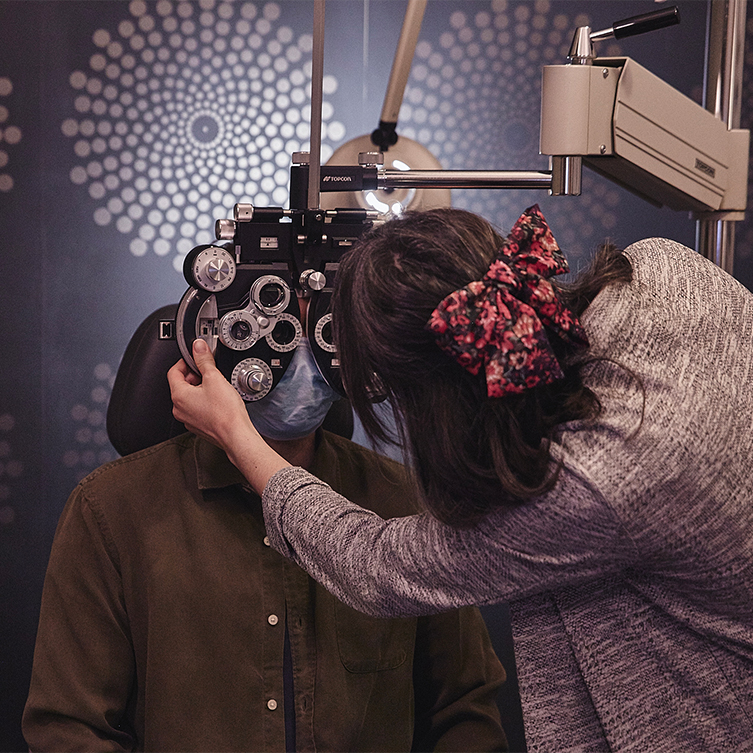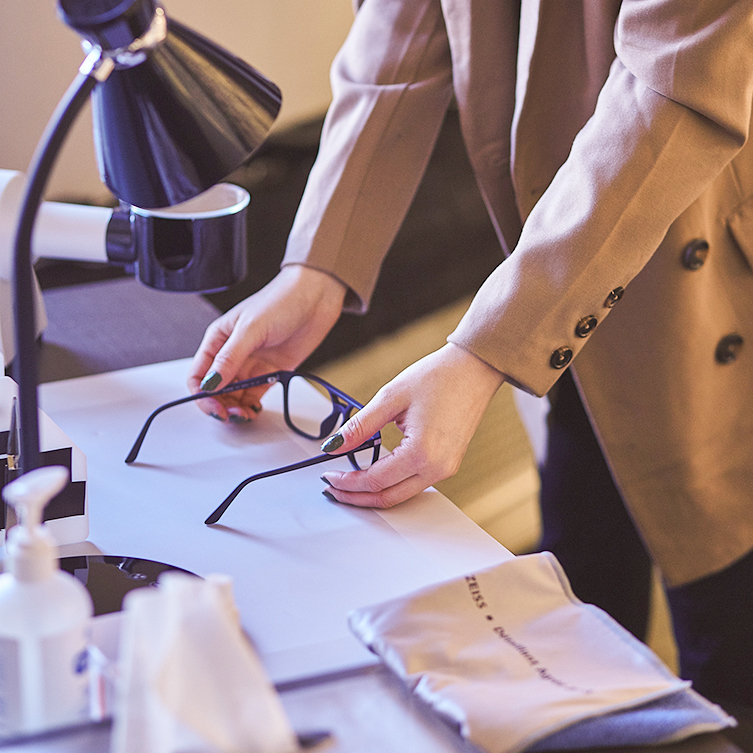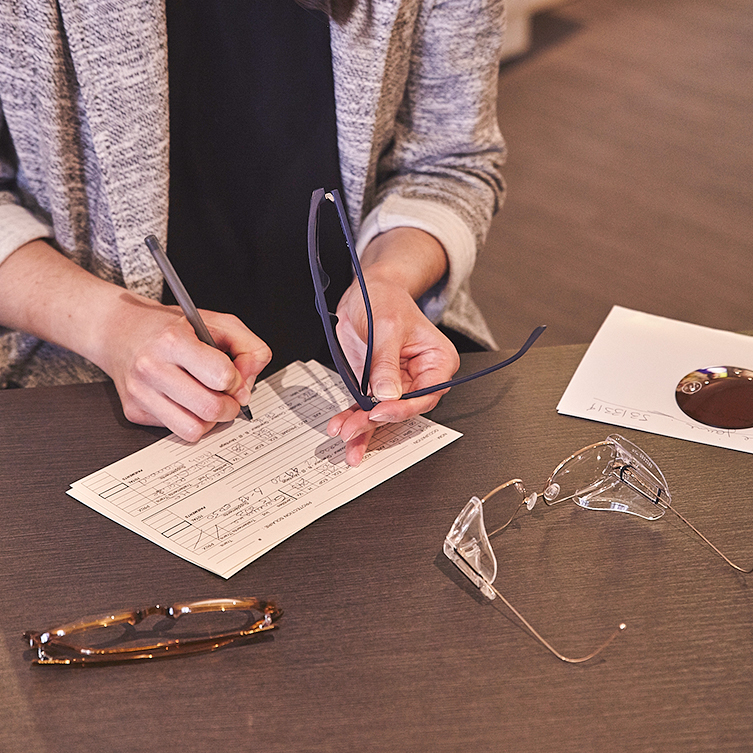The five steps in making prescription lenses
Like fingerprints, your eyes are unique. Helping you see as clearly as possible and giving your eyes the precise correction they need involves a rigorous manufacturing process. We break down how eye care professionals create high-grade prescription lenses into five steps.
From exam to delivery as seen by Nikon
| To understand all the technology, know-how, and demanding procedures that go into our lenses, we joined forces with the team at Nikon, a leading supplier of ophthalmic lenses to Canada and the world. |  |
Read on to learn about the five steps required to get you top-grade prescription lenses.
1. Eye exam and measurements
Your eye care professional collects 12 specific parameters as part of the eye exam at your Opto-Réseau clinic. They’re used to make you a pair of custom prescription lenses that gives you the very best view of the world. After your eye exam, the in-clinic team helps you select your frames. Once you’ve made your choice, a clinic optician takes measurements to make sure the lenses designed for your needs fit those frames to a T.

2. Overseas data transfer
Once your optometrist has entered your parameters and measurements, they’ll send your file directly to the Nikon laboratory in Montreal. Then they’re sent to Japan to be processed and optimized by the Nikon Optical Design Engine, or NODE.
 |  |
3. Precision calculations
The Nikon team in Japan uses NODE’s advanced, precise, and ultra fast technology to nail down the perfect formula for lenses that meet the specific needs of each individual wearer.
There was a time when the process took four or five days, but today Nikon’s equipment can complete it all in just five minutes. And its calculations also improve the results using infinite calculation loops that keep going until the perfect formula is attained. The result: Prescription lenses that offer unbelievable performance.
To give you an idea, in 1997 Nikon estimated it could produce 17,656,656 different lens designs. Now in 2021 the number is 9.3 x 1019 (93,000,000,000,000,000,000).
4. Manufacturing the lenses
This step (the most involved) starts when all the data along with that perfect lens-making formula arrive back at the Nikon lab in Montreal. That lab was, incidentally, the first Nikon lab outside Japan, and it produces more than 2,000 lenses every day.
Did you know? Besides its laboratory in downtown Montreal, Nikon has cutting and glazing centres in Halifax, Toronto, and Burnaby. More than 200 employees have been a part of Nikon’s big Canadian family since 1989.
Video below: in french
But before we dig into how glasses are made, we should point out that the Nikon team has put a lot of effort into selecting the right materials. That’s the only way to get those thin, light, durable lenses that provide wearers with superior UV protection and peerless quality of vision.
This step of the lens-making process alone can be broken down into another 15-odd steps, including
- Selecting the pucks (semifinished lenses): A robot selects which pucks will be turned into lenses. They’re placed in a tray and your future lenses begin their journey through the laboratory.
- Surfacing: The surface is cut into the puck, one machining point at a time, with a diamond. The surface of a personalized lens is six times as precise as that of ordinary lenses.
- Tinting: If it’s a tinted sunglass lens, the selected colour is applied.
- Coatings: The various coatings (scratch resistant, antireflective, oil-repellant, etc.) are applied to the lens.
- Cutting and glazing: The lens is cut to the required shape and mounted in the frame.
- Final inspection and shipping: The lens is inspected for quality control and packed up for shipping.
Attention to detail and adherence to laboratory standards are essential at every step. You can see some of the things Nikon specialists check for in the video below, including
- Casting flow rate (to prevent the formation of bubbles in the lenses)
- Environment (strictly controlled and dust-free to prevent any kind of contamination)
- Temperature, so that the lenses harden evenly without distortions (the lenses harden when heated).
Video below: in french
5. Delivery of your glasses
Once quality control is completed and the order is ready to leave the laboratory, it’s shipped to the clinic. When it gets there, your Opto-Réseau clinic team performs its own checks, then lets you know your new glasses are ready for pickup.
Constantly working toward clearer and clearer vision
Advancing technology and ever-evolving procedures are making it possible for prescription lens producers like Nikon to constantly improve manufacturing processes and develop better products to meet the specific needs of each individual.
For more on how your prescription glasses are made or how to pick the right glasses for your needs and lifestyle, get in touch with your Opto-Réseau eye care professional.
- Eye exam
- Glasses
- Lenses
- Nikon
- Ophtalmic lenses



